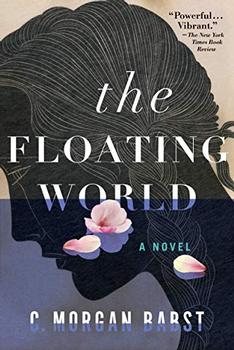Summary | Excerpt | Discuss | Reviews | Beyond the book | Read-Alikes | Genres & Themes | Author Bio

The Untold Story of Those Who Survived the Great American Dust Bowl
by Timothy EganAs only great history can, Egan's book captures the very voice of the times: its grit, pathos, and abiding courage.
The dust storms that terrorized America's High Plains in
the darkest years of the Depression were like nothing
ever seen before or since, and the stories of the people
that held on have never been fully told. Pulitzer
Prize–winning New York Times journalist and author
Timothy Egan follows a half-dozen families and their
communities through the rise and fall of the region,
going from sod homes to new framed houses to huddling in
basements with the windows sealed by damp sheets in a
futile effort to keep the dust out. He follows their
desperate attempts to carry on through blinding black
blizzards, crop failure, and the deaths of loved ones.
Drawing on the voices of those who stayed and
survived—those who, now in their eighties and nineties,
will soon carry their memories to the grave—Egan tells a
story of endurance and heroism against the backdrop of
the Great Depression.
As only great history can, Egan's book captures the very
voice of the times: its grit, pathos, and abiding
courage. Combining the human drama of Isaac's Storm
with the sweep of The American People in the Great
Depression, The Worst Hard Time is a lasting
and important work of American history.
Winner of the 2006 National Book Award.
While Egan has nothing but admiration for the individual farmers caught up in the devastation, he has a harsher view for the policies, and the people behind the policies, that managed to eradicate the "greatest grassland in the world" in an historical blink of an eye...continued
Full Review
 (681 words)
(681 words)
(Reviewed by BookBrowse Review Team).
The economic slump known as the Great Depression began in the USA but ended up effecting Europe, and other industrialized parts of the world from 1929 to about 1939. It was the longest and most severe depression ever experienced by the industrialized Western world. The US economy was already in depression before the Stock Market collapse of October 1929, but the precipitous decline in values put great strain on individual investors and financial institutions (by 1933 11,000 of the US's 25,000 banks had been declared insolvent). By 1932 stock prices were at just 20% of their 1929 value and manufacturing output was down 54% due to a drastic reduction of demand; about 12 to 15 million workers were unemployed (about 25-30% of...

If you liked The Worst Hard Time, try these:

by Karen Russell
Published 2025
From Pulitzer finalist, MacArthur Fellowship recipient, and bestselling author of Swamplandia! and Vampires in the Lemon Grove Karen Russell: a gripping dust bowl epic about five characters whose fates become entangled after a storm ravages their small Nebraskan town.

by C. Morgan Babst
Published 2018
A dazzling debut about family, home, and grief.